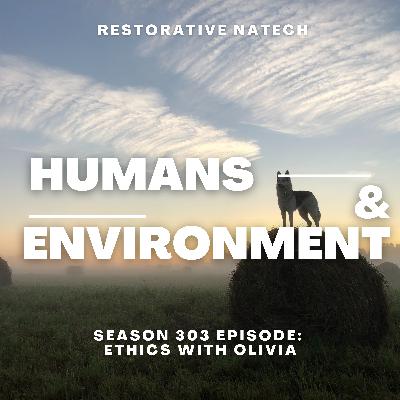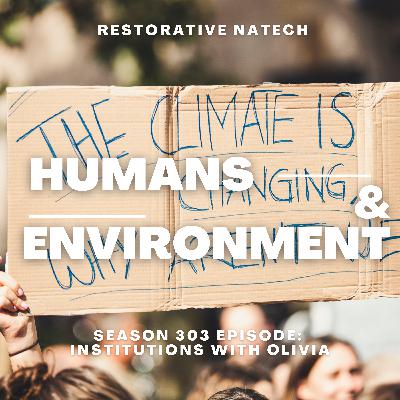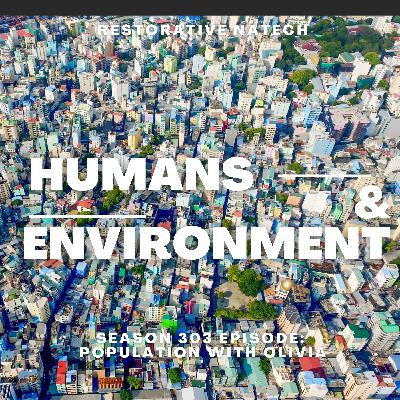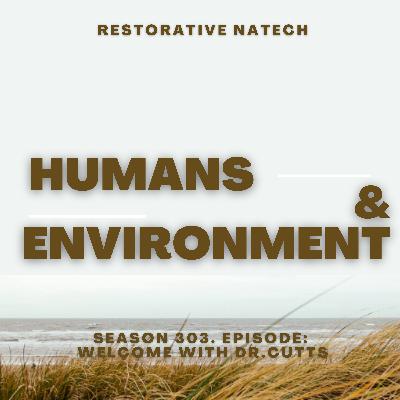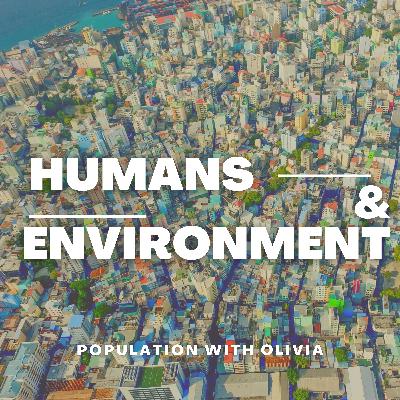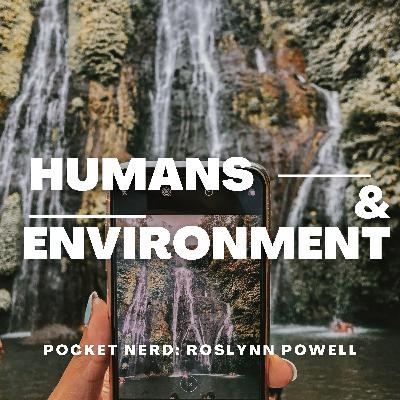Discover Restorative Natech: Mini-Lessons that use technology to connect with nature
Restorative Natech: Mini-Lessons that use technology to connect with nature

Restorative Natech: Mini-Lessons that use technology to connect with nature
Author: Bethany Cutts
Subscribed: 0Played: 0Subscribe
Share
© Bethany Cutts
Description
This is a podcast series designed to allow students to reduce eyestrain and get outside while they learn or follow-up on key messages. We are busting the myth that technology is a barrier to connecting with nature. Accessible versions in Moodle. Hosted by Dr. Cutts and Friends.
Cover Art Photo by @kxtrincastro on Unsplash
Cover Art Photo by @kxtrincastro on Unsplash
10 Episodes
Reverse
• Define ethics, anthropocentrism, and utilitarianism • Describe biblical, political philosophical, conservationist, preservationist, and ecological perspectives on the relationship between humans and nature • Identify the degree to which solutions take anthropocentric or utilitarian approaches to solving environmental problems • Critically analyze stakeholders’ environmental ethical perspectives based on their proposed solutions or positions taken in relation to environmental problems.
lecture delivered by O. Vila
Corresponds to Robbins, P., Hintz, J., & Moore, S. A. (2014). Environment and society: a critical introduction. John Wiley & Sons. Listen via Restorative Natech podcast: https://anchor.fm/bethany-cutts (or where ever y'all find podcasts)
• Define hazard, risk, social vulnerability, and disaster • Distinguish phases of emergency management • Explain why risk can be thought of as a decision, and why disasters are social phenomena • Demonstrate how social factors influence people's vulnerability to disasters. lecture delivered by O. Vila Corresponds to Robbins, P., Hintz, J., & Moore, S. A. (2014). Environment and society: a critical introduction. John Wiley & Sons. Listen via Restorative Natech podcast: https://anchor.fm/bethany-cutts (or where ever y'all find podcasts)
• Define common property and institutions • Describe Game Theory, the Prisoner's Dilemma, and the Tragedy of the Commons • Identify real-world examples of common's management • Critically analyze real-world and hypothetical examples of commons management in relation to the principles of boundaries, proportionality, collective choice, monitoring, sanctions, conflict resolutions, and autonomy. lecture delivered by O. Vila Corresponds to Robbins, P., Hintz, J., & Moore, S. A. (2014). Environment and society: a critical introduction. John Wiley & Sons. Listen via Restorative Natech podcast: https://anchor.fm/bethany-cutts (or where ever y'all find podcasts)
• Define externality, market failure, transaction costs, monopoly, greenwashing, and green certification • Provide examples or hypothetical scenarios of the market response model, Coase Theorem, and Cap and Trade • Identify real-world examples market-based solutions to environmental problems and policies related to those solutions • Critically analyze the implicit assumptions of real-world market-based solutions to environmental problems, and explain if and in what ways they are misguided lecture delivered by O. Vila Corresponds to Robbins, P., Hintz, J., & Moore, S. A. (2014). Environment and society: a critical introduction. John Wiley & Sons. Listen via Restorative Natech podcast: https://anchor.fm/bethany-cutts (or where ever y'all find podcasts)
Define carrying capacity, ecological footprint, zero population growth, birth rate, death rate, fertility rate
Produce examples of how population size, affluence, and technology influence environmental impact.
Synthesize what you learn about population growth and declines to critique solutions to environmental impacts.
Critically analyze solutions to reduce environmental impacts of humans in a way that identifies potential injustices and trade-offs.
lecture delivered by O. Vila Corresponds to Robbins, P., Hintz, J., & Moore, S. A. (2014). Environment and society: a critical introduction. John Wiley & Sons. Listen via Restorative Natech podcast: https://anchor.fm/bethany-cutts (or where ever y'all find podcasts)
By completing the policy brief assignment, students will demonstrate the ability to engage in independent learning, synthesize information, and present it in a form that is useful to decision-makers. The research, writing, visualization, and argumentation skills will aid personal and professional efforts toward greater civic engagement on a broad spectrum of current and future policy dilemmas.
Define course structure and expectations
Olivia shares a Shitt's Creek example to explain coase theorem. Ewwww, David!
Define externality, market failure, transaction costs, monopoly, greenwashing, and green certification
Provide examples or hypothetical scenarios of the market response model, Coase Theorem, and Cap and Trade
Identify real-world examples market-based solutions to environmental problems and policies related to those solutions
Critically analyze the implicit assumptions of real-world market-based solutions to environmental problem s, and explain if and in what ways they are misguided
Corresponds to content in Robbins, P., Hintz, J., & Moore, S. A. (2014). Environment and society: a critical introduction. John Wiley & Sons.
Photo by v2osk on Unsplash
You know Thomas Malthus is a problematic figure, but yet Malthusian thought is deeply ingrained in so many environmental science and ecological principles. Olivia lays down the language and concepts associated with Malthusian and neoMalthusian demography and outlines how population-based arguments have been used to reinforce authoritarian control over women and colonized areas of the work. By listening, students will be able to...
Define carrying capacity, ecological footprint, zero population growth, birth rate, death rate, fertility rate.
Produce examples of how population size, affluence, and technology influence environmental impact.
Synthesize what you learn about population growth and declines to critique solutions to environmental impacts.
Critically analyze solutions to reduce environmental impacts of humans in a way that identifies potential injustices and trade-offs.
Created for Humans and Environment at NC State University.
Corresponds to content in Robbins, P., Hintz, J., & Moore, S. A. (2014). Environment and society: a critical introduction. John Wiley & Sons.
Photo by Ishan @seefromthesky on Unplash
This bonus track taps the deep knowledge to Roslynn Powell. As a PhD Candidate in Parks, Recreation, and Tourism Management she is doing amazing research on the emotional labor Black folx do at parks and cultural heritage sites that are working, at long last, to include honest narratives of enslaved people into interpretive work. As a Master's student, Roslynn's work disrupted the assumption that technology necessarily separates people from nature.


